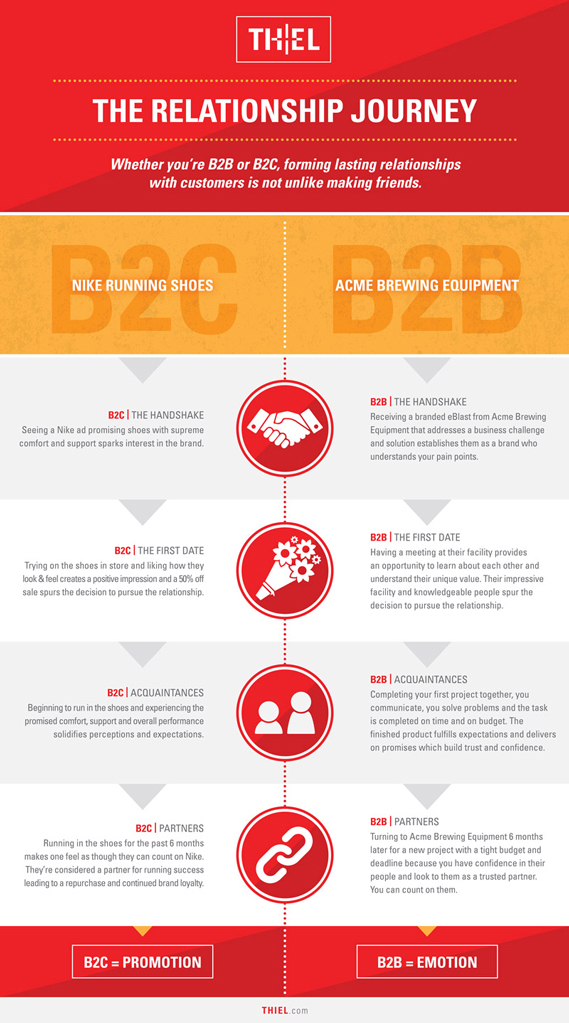
In this blog series, we’ve been discussing how forming brand relationships are closely tied to the very human process of forming lasting friendships in one’s personal life. As humans, were are incredibly social creatures drawn to those around us whom we can relate to and feel a strong connection with. Think about it, how many people have you become best friends with who share nothing in common with you? In friendships, there’s often a common thread or tie that bring two people together. It could be that you share the same hometown, have a common hobby, or live life by following a shared set of beliefs or values. The same is true for brand relationships.
Our blog series now culminates with the moment when a person has now “done the dance” with a brand, and has made it through those first important stages of relationship development—the handshake, the first date, and acquaintanceship. It’s the moment where a person not only knows your brand, but chooses your brand above all others because they not only feel a sense of common ground but know that they can rely on and trust your brand—like a best friend and partner.
Partnership. It’s the pinnacle point of any relationship that brands and people alike strive for. In a partnership, two parties cease to think in terms of “me” and “you,” but begin to think as a mutually beneficial team—”us.” This emotional connection and way of thinking is clearly evident between close friends, significant others, spouses and families—but how can it be applied to brands?
Believe it or not, this partner-centric thinking between brands and customers is much easier to see than you may think. The following infographic shows the progression of a brand relationship from both a B2C and B2B perspective.
As you can see, the aspect of partnership is present in both B2B and B2C brand relationships. A noteworthy point of discussion, however, is how the partnerships differ. While brand loyalty and trust are certainly at the core of both engagements, the B2C engagement is more promotional than emotional. At THIEL we’ve long-held the belief that B2B relationships often have a stronger human element making relationships and successful partnerships critical to brand growth and success.
It’s important to remember that behind every “business-to-business” transaction is a relationship between two or more people. While comfort and ankle support was at stake for the runner in our example, the individuals in our B2B example had their company’s success and future at stake (not to mention their own career). Having a valued partner they could trust meant they could make a confident decision in a brand that they knew could come through for them in a tight situation. Ultimately, whether you’re B2C or B2B—selling shoes or brewery equipment—partnership is a valuable end goal for not only people, but brands who seek to maintain lasting, positive relationships with their customers.
Previous in the series: Brands Are Like People: Friends & Acquaintances
Next in the series: Brands Are Like People: The Breakup

